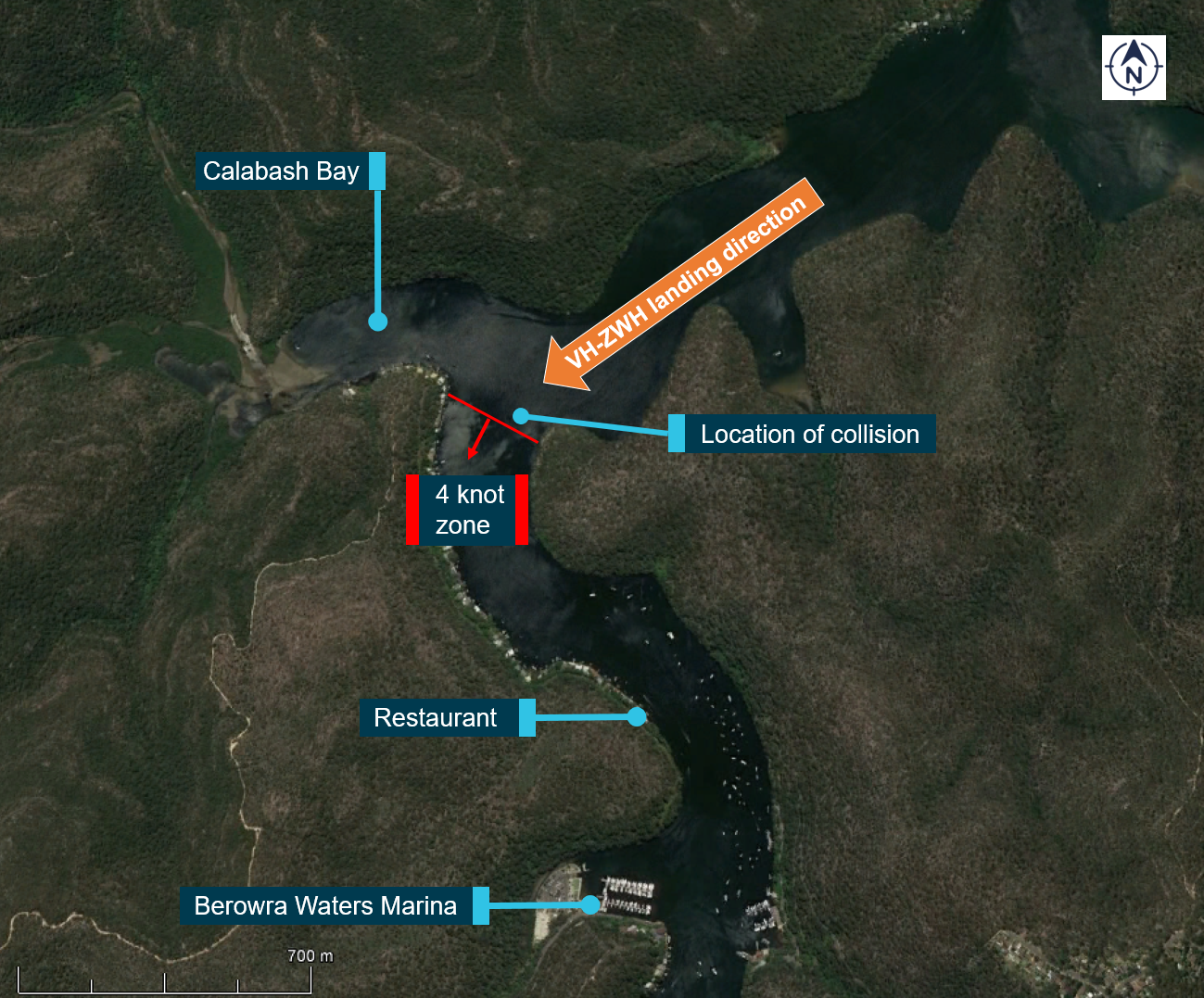
A collision between a Cessna Caravan floatplane and a small aluminium boat highlights the importance of scanning and assessing landing areas for potential hazards during amphibious flying.
The floatplane had just completed a water landing at Berowra Creek, in the Hawkesbury River catchment north of Sydney, on 29 June 2019. After slowing down to taxi speed, the aircraft’s front left float bumped into a small stationary boat. There was no damage to the aircraft or boat, while one person in the boat sustained minor injuries.
The ATSB’s investigation into the incident found that the pilot did not see the boat due to a combination of factors including the weather conditions on the day as well as the colour, size, lack of movement and location of the boat as it was positioned in the aircraft’s direct path.
This incident highlights the importance of scanning and assessing landing areas for any potential hazards, and of the joint responsibility of both aircraft and marine vessels to see and avoid other aircraft and vessels operating on the water.
“This incident highlights the importance of scanning and assessing landing areas for any potential hazards, and of the joint responsibility of both aircraft and marine vessels to see and avoid other aircraft and vessels operating on the water,” said ATSB Director Transport Safety Dr Stuart Godley.
“When choosing an operating speed for any vessel or aircraft on the water, consideration should be given to any potential blind spots and areas where other vessels could emerge.”
Subsequent to the incident the aircraft operator has advised its pilots to remain on the right hand side of the waterway to reduce the risk of a blind spot near the area of the incident.
In addition, as a standard operation, company pilots are to reduce the speed of the aircraft to an idle power taxi speed after landing, 100 m before the start of the 4-knot zone at Berowra.
Read the final report: Collision with vessel involving Cessna 208, VH-ZWH, Berowra Waters, New South Wales, on 29 June 2019


